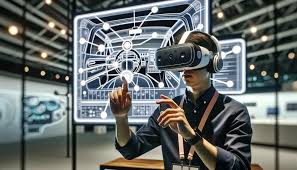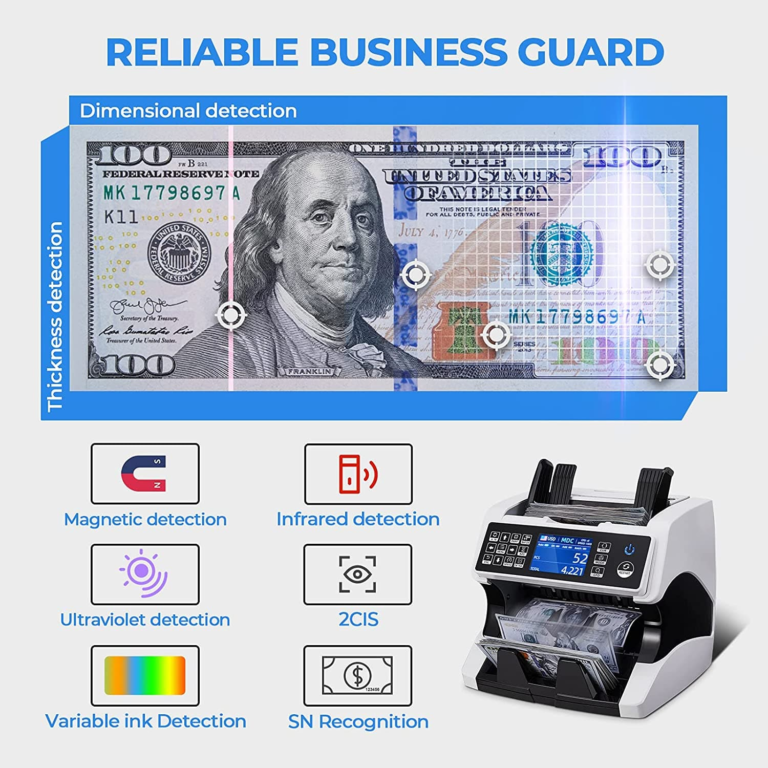Top 8 Reasons to Incorporate AR and VR Technology in Employee Training
The fast-paced advancement of technology is transforming how companies approach employee training. Augmented Reality (AR) and Virtual Reality (VR) are among the top technologies used by enterprises and industrial firms. One of the most established uses of AR/VR in businesses is for employee training.
These immersive technologies offer hands-on, experiential learning opportunities that traditional methods cannot provide. By partnering with the IT Support Los Angeles team, AR and VR allow employees to practice and improve their skills without the constraints of a physical setting. Whether it’s training for safety procedures, technical tasks, or customer interactions, AR and VR can enhance knowledge retention, engagement, and overall job performance.
In this blog, we will discuss the main reasons for integrating AR and VR technology into employee training.
What is AR?
Augmented Reality (AR) is a technology that overlays digital information, such as images, sounds, or data, onto the real-world environment. Users can view a combination of virtual elements superimposed on their physical surroundings using devices like smartphones, tablets, or AR glasses. This enhances the real world with interactive, computer-generated content without fully immersing the user in a virtual space.
What is VR?
Virtual Reality (VR) is a fully immersive technology that transports users into a completely simulated environment, often using headsets and sensory devices. Unlike AR, which adds digital elements to the real world, VR replaces the user’s physical surroundings with a computer-generated 3D environment, providing an interactive experience. Users can explore, interact, and engage with virtual objects and settings as if they were real.
8 Reasons to Incorporate AR and VR in Employee Training
- Enhanced Employee Engagement and Retention
The main reasons for using AR and VR technology in employee training are to enhance employee engagement and retention rates. AR and VR technologies provide immersive and interactive learning experiences, capturing employees’ attention and creating a more engaging training environment.
This heightened engagement can lead to better knowledge retention, as employees are more likely to remember information presented in a memorable and interactive way. Additionally, using AR and VR in training can help employees feel more connected to the material, increasing their motivation to learn and apply new skills in their roles.
- Risk-Free Simulated Training Environments
One of the top reasons to incorporate Augmented Reality (AR) and Virtual Reality (VR) in employee training is the ability to provide risk-free simulated training environments. By utilizing AR and VR technologies, employees can engage in realistic scenarios to practice their skills and decision-making without any real-world consequences.
This immersive training allows employees to make mistakes, learn from them, and improve their performance in a safe and controlled setting. Additionally, AR and VR training can help to increase employee confidence and competence by providing hands-on experience that closely mirrors real-life situations.
- Customized and Adaptive Learning Solutions
Customized and adaptive learning solutions are also top reasons for incorporating AR and VR in employee training, which can significantly enhance the effectiveness of training sessions. By leveraging AR and VR technologies, companies can create immersive and interactive training experiences tailored to individual learning styles and needs.
These cutting-edge tools allow employees to engage with realistic scenarios, practice skills in a safe environment, and receive immediate feedback, improving knowledge retention and performance outcomes. Customized AR and VR training modules can adapt to the pace and proficiency of each employee, ensuring a more personalized learning experience that maximizes skill development and overall training impact.
- Cost-Effective Training
Incorporating AR and VR in employee training can provide a cost-effective solution for companies aiming to improve their training programs. By using AR and VR technology, organizations can lower costs related to traditional training methods, such as travel expenses, printed materials, and hiring trainers.
Additionally, AR and VR training modules can be reused multiple times without incurring extra costs, making them a sustainable and efficient option for continuous employee development. This innovative approach streamlines the training process and offers employees immersive learning experiences that enhance knowledge retention and skill acquisition.
- Improved Collaboration and Teamwork
A key reason for incorporating AR and VR in employee training is to improve collaboration and teamwork within an organization. These immersive technologies offer employees realistic scenarios in which they can work together, communicate effectively, and solve problems as a team.
By simulating real-world situations in a virtual environment, AR and VR training programs encourage employees to collaborate, share ideas, and develop strong teamwork skills. This fosters a sense of unity and cooperation among team members, ultimately leading to improved overall performance and productivity within the organization.
- Closing the Skills Gap
Closing the skills gap is a critical reason for incorporating augmented reality AR and VR in employee training. By using these technologies, organizations can provide immersive learning experiences that simulate real-world scenarios, allowing employees to develop and enhance their skills.
With AR and VR training modules, employees can practice complex tasks, receive immediate feedback, and refine their abilities without needing on-the-job training or risking costly mistakes. This targeted approach not only efficiently bridges the skills gap but also ensures that employees are better equipped to meet the demands of their roles, ultimately increasing productivity and performance within the organization.
- Boost Employee Motivation
Employee motivation is crucial for the success of any training program, and incorporating AR and VR can significantly boost employee engagement and enthusiasm. These technologies provide interactive and immersive training experiences, helping employees feel more connected to the material and increasing their motivation to participate and excel in the training process.
AR and VR can simulate real-world scenarios, enhancing learning retention and creating a dynamic environment that encourages active participation in employee development.
- Reduce Training Time
Incorporating AR and VR into employee training programs can reduce training time. These immersive technologies allow hands-on learning experiences in a simulated environment, helping employees grasp complex concepts more efficiently than traditional methods.
Interactive scenarios and real-time feedback streamline the learning process, leading to quicker skill acquisition and improved employee retention rates. Integrating AR and VR in training enhances the overall experience and optimizes productivity by minimizing the time spent on conventional training approaches.
Conclusion
Incorporating AR and VR into employee training programs offers companies a powerful tool to enhance engagement, improve skill development, and reduce costs. These immersive technologies create hands-on, risk-free environments where employees can learn, practice, and collaborate in real-world scenarios without consequences. By closing the skills gap and boosting motivation and knowledge retention, AR and VR provide a dynamic solution for businesses looking to streamline training processes and optimize productivity. For more information, contact the Managed IT Services Los Angeles experts.







